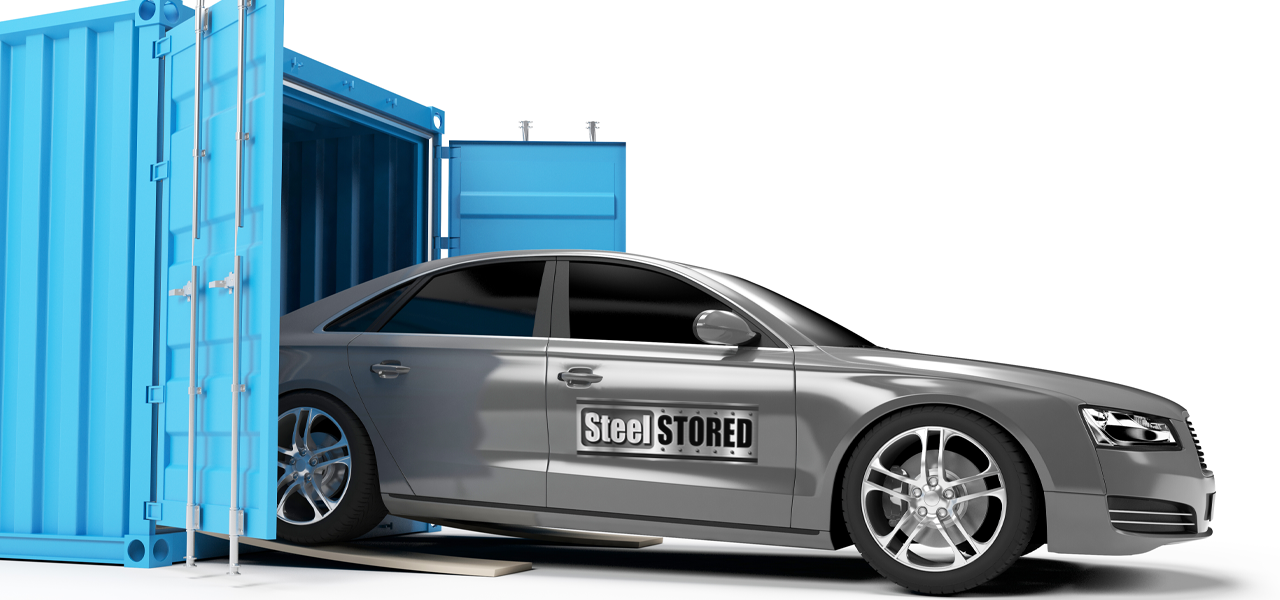
Reimagining Shipping Containers as The Garage
A house without a garage leaves the American Dream incomplete. But for most current homeowners adding on a garage has become financially and logistically difficult. The Associated General Contractors of America attributes that to soaring materials costs, supply chain systems in gridlock, and project delays as the new normal. But American inventiveness has created a way around those obstacles. Shipping containers are being reimagined as garages. The price is affordable. Delivery and installation happen quickly. And the wonderful extra is that homeowners escape the red tape. Classified as temporary structures, the shipping-container garages require no permits.
Climate Change, Crime, Insurance Premiums
In American lore garages were where entrepreneurs created tomorrow, householders could tinker with tools and hobbies, and overwhelmed family members could find a bit of peace and quiet. That was then.
Now there are more pragmatic, urgent reasons for what a garage provides.
At the top of the list is this: The garage is a must to protect the value of a car and extend its life span. According to Kelley Blue Book, the average cost of a new car is $45,031. The wild swings in weather conditions generated by climate change can not only destroy the car’s fit and finish. There could be flooding. Parked outside, the vehicle can be swiped by those skidding on the ice. And there can be strain on engines from continually starting up in raw frigid conditions.
Another scary concern is the surge in auto thefts. It has been the highest since 2008. The National Insurance Crime Bureau documents a recent 11.8 percent increase from 2019. A favorite target is the catalytic converter. Repairing that generates a bill in the thousands of dollars.
That leads into the cost of auto insurance. Premiums are calculated according to the probability of submitting a claim. With the car parked outside the probability increases. With the car in the garage there could be a 5 percent discount.
Shipping Containers Easily Repurposed into Garages and More
Essentially a garage is a simple structure. The basic shipping container fits all the specifications for size, capability for weather-resistant storage, security, and durability.
The edge the shipping container has is that many are manufactured from Corten steel – sometimes called “weathering steel.” When exposed to air and water there is an atypical reaction. Instead of corrosion happening, there is oxidation which prevents that from happening.
The basic features of the shipping container can be upgraded with add-ons. They include windows, plumbing, electricity, awnings, and a wood façade.
Portability and Flexibility
The shipping container garage provides unique advantages.
The most significant is portability. The garage can go along for relocations. Already having a garage can be the source of saving on what is paid for the next house. That is because a traditional garage is not needed. As the real estate industry knows, garages boost the property’s purchase price. Those are what home purchasers want.
Another advantage is the shipping container’s structural flexibility. The garage can be converted into a home office, aboveground pool, or even a pop-up store.
The Cost
Obviously, the overall cost of the shipping-container garage will be less than the construction costs of a traditional one.
Building a conventional garage, estimates HomeGuide, runs between $35 and $60 per square foot, with the final cost for a two-car garage between $19,600 and $28,200.
Do the math.
A 20-foot shipping container can accommodate two cars. The cost ranges from $4,000 to $6,000. But if the vehicles are large and storage is wanted, a 40-footer may be a better fit. The range is $6,000 to $10,000.
Add-ons would incur extra costs.
SteelSTORED will deliver the containers to the customers’ location.
Fluctuation in Pricing
With shipping containers, as with the pricing for so many other products, nothing is set in stone, at least not for long in this era with so much change.
Factors which could influence prices upward or downward include:
- The season. With construction projects primarily scheduled for spring and summer, there is stepped-up use of shipping containers. Likely, given the law of supply and demand, price points will experience seasonal increase.
- The Economy. Obviously, in a downturn price points can decline. Inflation, though, can jolt them upwards. Experts are divided if the current inflation will hold on at the current pace.
- Price of steel. Since March 2020, reports Fortune, steel prices had gone up more than 200 percent. That is expected to continue on an upward trajectory. Steel is a primary material used in the shipping-container manufacture.
The way to manage the uncertainty is to do business with a vendor trusted in the community. SteelSTORED is among the most respected brandnames in New England. It is the go-to for information, products, and services.
The Urgent Next
Cars have become a major asset. In the current inflationary economy, the average price will likely cross the boundary beyond the current $45,031. Therefore, it is reckless not to protect this asset. The shipping-container version of a garage provides that protection affordability, with the advantages of no red tape, portability, and flexibility.
The urgent next step is a complimentary consultation with SteelSTORED.
